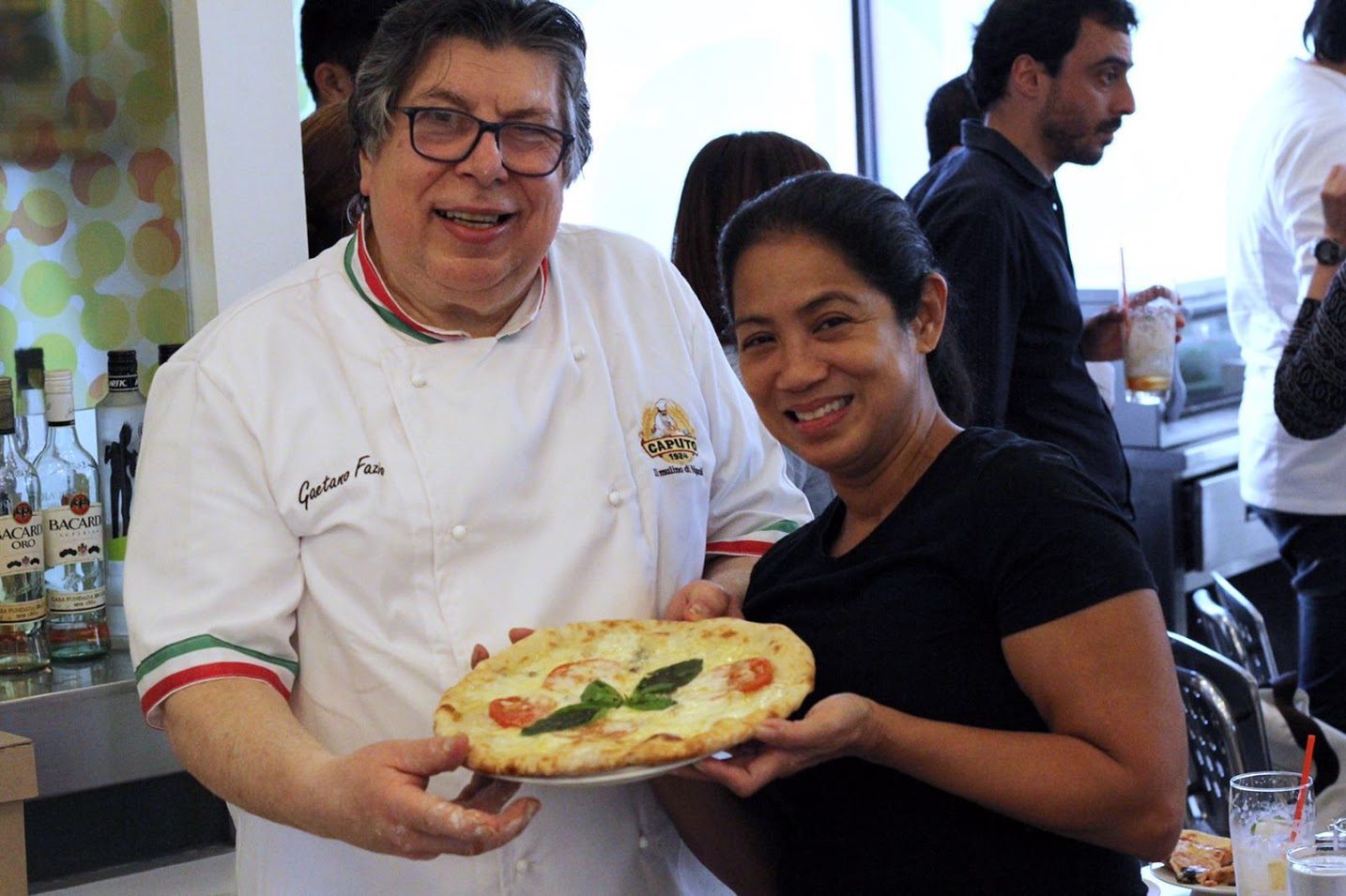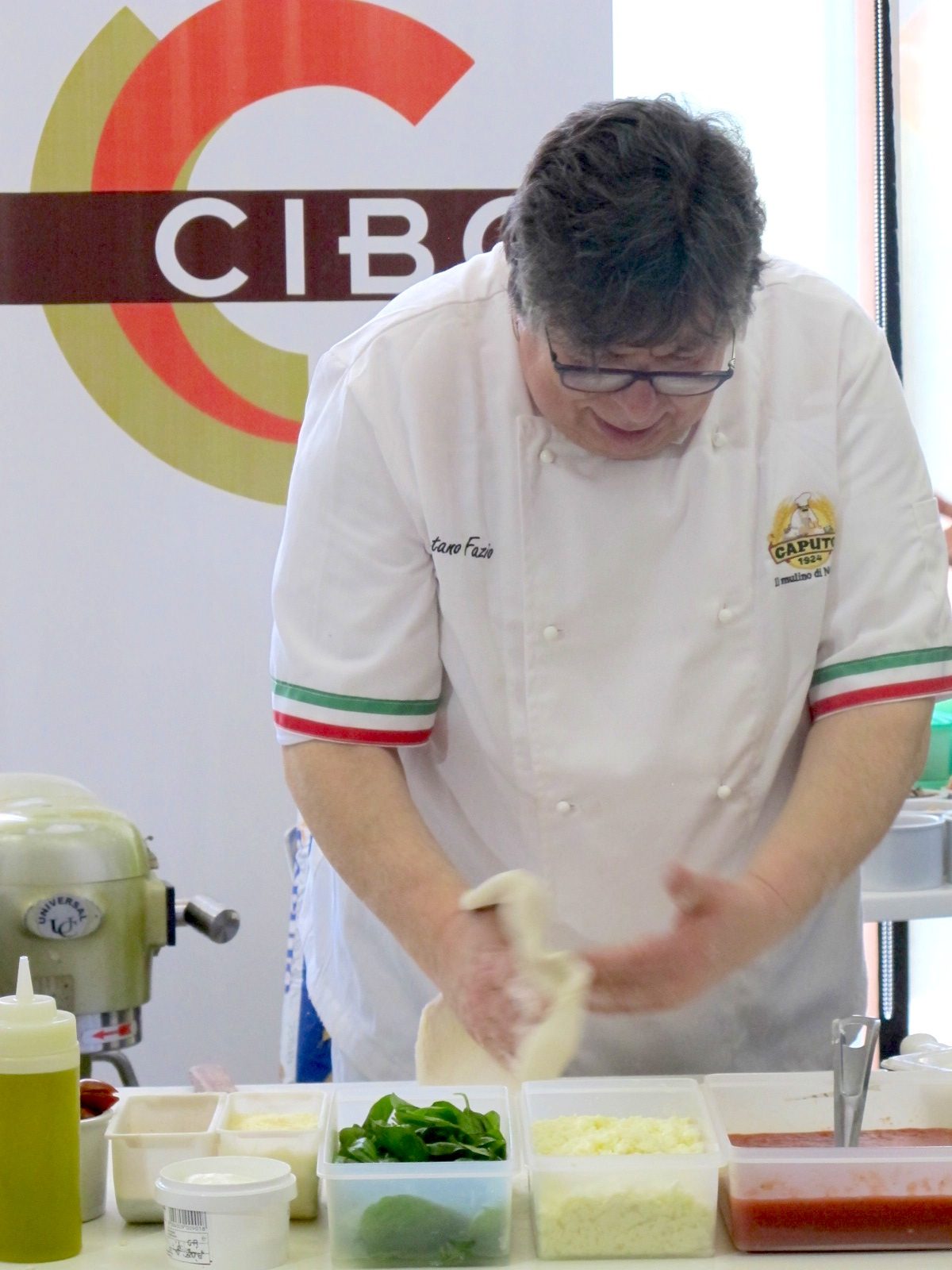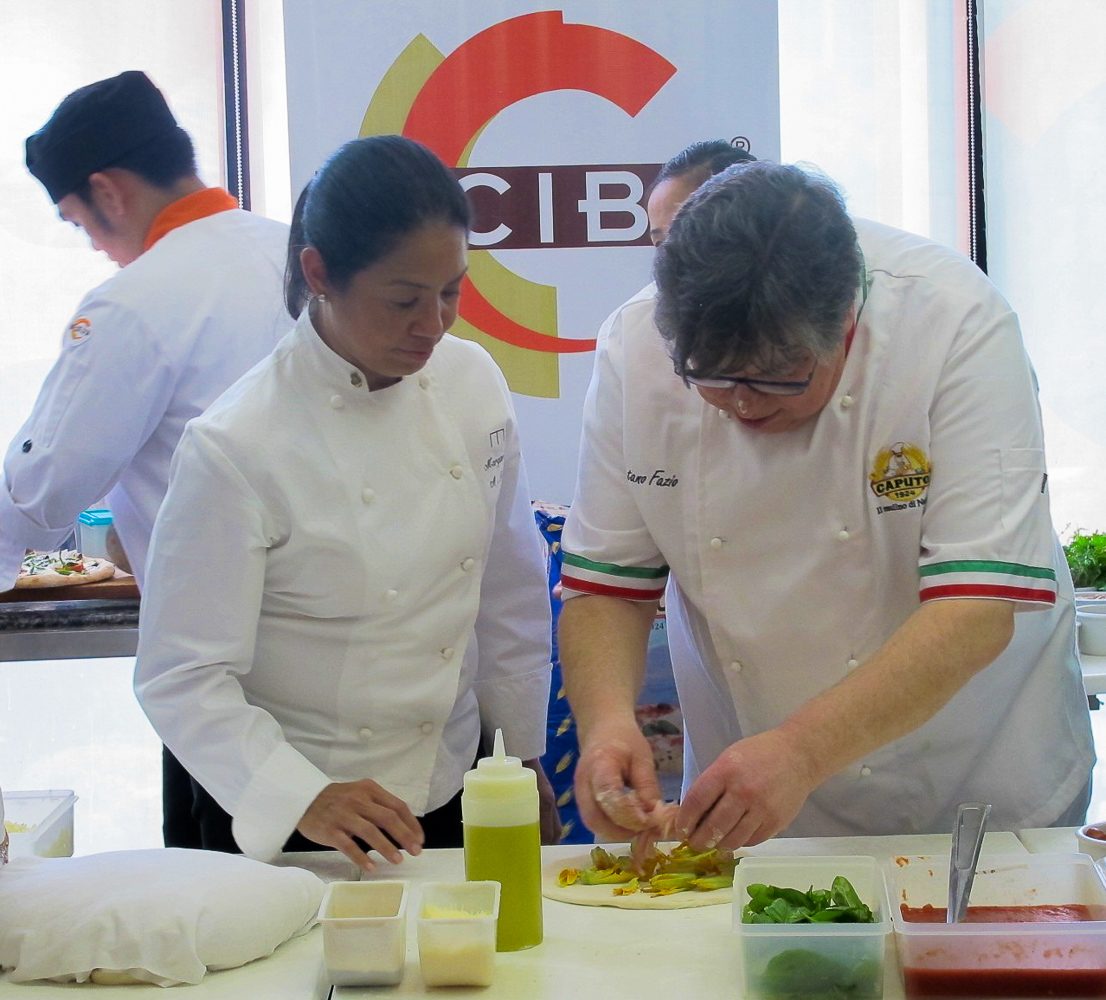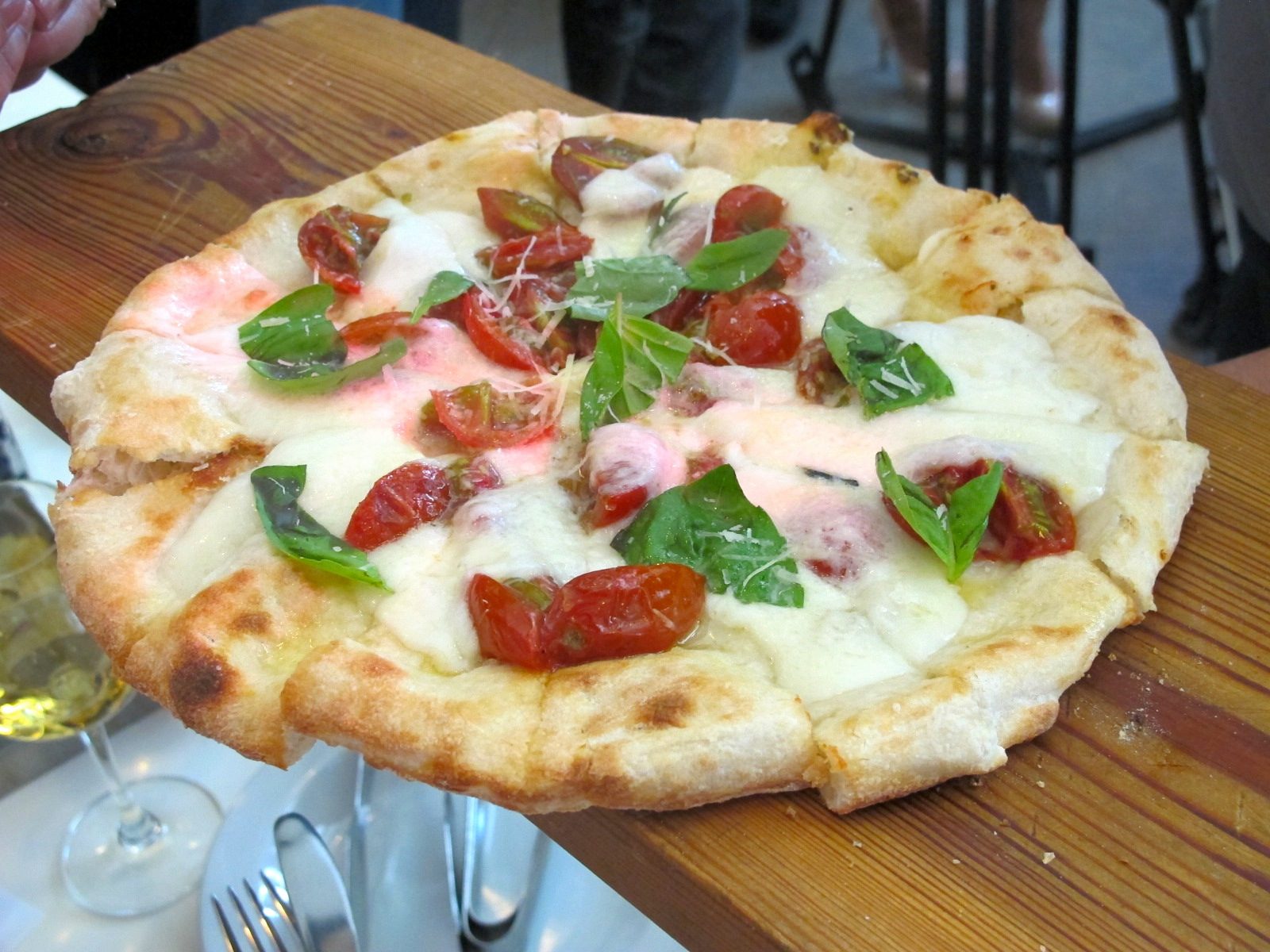SUMMARY
This is AI generated summarization, which may have errors. For context, always refer to the full article.

Not all pizzas are created equal.
You’ll find variations of this traditional Italian specialty in many local restaurants, international fast-food chains, and food stalls, but nothing comes close to the original one created in Naples. Pizza-maker, Maestro Gaetano Fazio, who has been making pizzas for over 50 years now, was recently in Manila for a pizza-making session. He was the mentor of Chef Margarita Fores (Asia’s Best Female Chef for 2016), the lady behind CIBO who traveled all the way to Ischia in Italy – 12 years ago – to be close to the source and learn from no less than the master.
In his first-ever visit to the Philippines, Fazio shared his secrets of the trade with the restaurant staff and folks from the media. Apparently, making the humble pizza pie is easier said than done. With his skillful hands, he demonstrated how to make authentic Pizza Napoletana and had no qualms about revealing his knowledge. We also got to know more about what we can expect soon from fan favorite CIBO.
According to the maestro, “Pizza is for everyone.” With these helpful tips from him and Chef Fores, even homemakers would be able to improve their pizza-making skills right away.

Tip #1: Start with the basic dough and handle it gently
Through an Italian interpreter, the maestro explained, “Remember, you don’t have to add anything else aside from the four basic ingredients – salt, flour, yeast, and water. That’s it. No sugar, no eggs, no butter. This is the basic dough that you need for the typical Pizza Napoletana.”
It may seem easy but there’s a strict process behind it. You have to measure the water first, add the salt, and then put the flour in between the salt and yeast, as the salt overpowers the yeast. It’s important to let the dough rest for a while before handling it again.
“The preparation of the dough is, I think, maybe 70% of making a good pizza,” said Fores who invested in learning about pizza making in Italy in 2004 when the CIBO habitués clamored for it back then. “I remember the first time we came back from Gaetano 12 years ago, I got a little bit frustrated because it took us 7 to 8 months to be happy with the product we were making. Fast forward 12 years after, we’re relearning things that we may have missed out on when we learned the first time.”
Tip #2: Study your environment
You will need to adjust the measurement of the ingredients for the dough as you take in consideration your surroundings. Unlike Italy that has four seasons, the Philippines basically has two – dry and wet. “The way the ingredients react needs to be practiced and it needs to be studied very carefully,” said Fores who mentioned that it might take a while to find the right recipe. “The amount of yeast, the kind of yeast that you should use… You choose whichever one is more sort of suited to our climate.”

Tip #3: Use the best ingredients
Great-tasting pizza starts with the best ingredients. Even the flour can make a difference in the taste and texture of the dough. For example, up until now, CIBO used whatever Italian flour was available in the market. But recently, purveyors of the best Italian products in the country, Bacchus International, was able to bring in Caputo, the best artisanal flour for pizza. It’s very different from the ordinary all-purpose flour that makes pizza dough taste like bread you got from the bakery around the corner. This type of flour creates a light and airy consistency that still has that chewy bite.
“When you do Italian food, things like good oil, the best cheese – those things you can’t replace,” expressed Fores. “I’m hoping people will see the difference. I think the fact that you’re starting with already superior ingredients – I mean, that’s like a major plus.”

Tip #4: Appreciate the proportion
If you compare Italian pizza to the American version, you’ll find that the latter is loaded with much more toppings. For them, “More is more.” “In Italy it’s so different,” according to Fores who worked in the maestro’s restaurant when she was in Italy. “There’s a real proportion that they use for pizza and the ingredients they put on top because they want to taste the beauty of the crust as much as they want to taste the toppings.”
One of the chef’s favorites is the classic Pizza Margherita, which is just a simple combination of tomato sauce, mozzarella cheese, and basil. Incidentally, it is one of the 3 official pizza variants of Neapolitan-style pizza.
Tip #5: What’s the best cooking method?
The kind of oven you use to bake makes an impact in the pizza’s flavor, and the maestro prefers the classic wood-burning oven made of bricks. The pizza master believes that, “Using other kinds of oven, we kind of lose the aromas needed by the wood-burning one.”
“The heat that comes from that allows the pizza to come alive. The challenge there is no matter how good your crust is, the oven also makes a difference,” said Fores who plans to upgrade the restaurant’s oven soon – hopefully before Fazio visits the Philippines again. – Rappler.com
*photos by author unless otherwise indicated

As a freelance writer and editor, Nikka Sarthou-Lainez enjoys being her own boss and having the flexibility to indulge in her other passions like food and travel. Every year, she vows to visit places she has never been to and tick them off her bucket list. She hopes to be like chef/host Anthony Bourdain someday who journeys around the world to sample different cuisines, one plate at a time. Find out more about her travel and culinary adventures and follow her on Twitter @nikkasarthou
Add a comment
How does this make you feel?
There are no comments yet. Add your comment to start the conversation.